Gardening enthusiasts often find themselves faced with the dilemma of dealing with unsightly garden hoses that crisscross their lawns and flowerbeds. One solution that has gained traction is burying the garden hose.
While this may seem like a convenient way to keep your garden neat and organized, there are both benefits and drawbacks to consider before you grab your shovel.
The Pros of Burying a Garden Hose
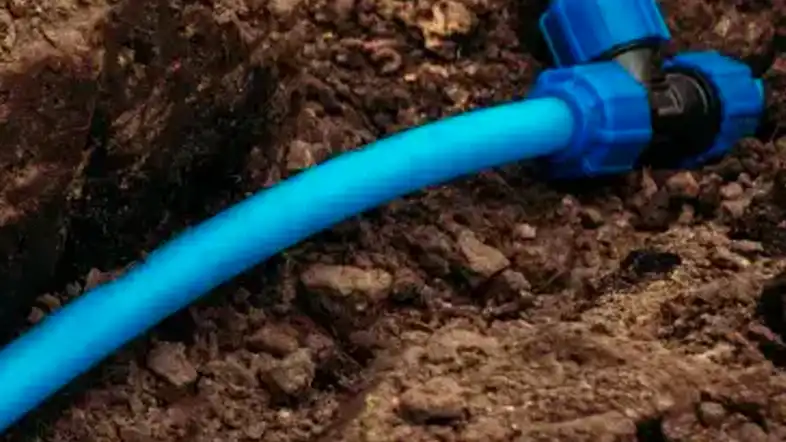
Easy Maintenance
Burying a garden hose can simplify maintenance tasks. No longer will you need to wrestle with unwinding, coiling, and storing the hose after each use. A buried hose remains hidden, requiring minimal effort to access when watering your garden or washing your car.
Aesthetic Appeal
A primary motivation for burying hoses is the visual improvement it offers. A neatly buried hose eliminates the need for makeshift storage solutions and enhances the overall appearance of your outdoor space, contributing to a more polished and organized look.
Protection from Damage
Above-ground hoses are susceptible to various forms of damage, including exposure to the elements and accidental kinks or cuts. Burying the hose protects it from UV rays, extreme temperatures, and potential physical harm, potentially extending its lifespan.
The Cons of Burying a Garden Hose
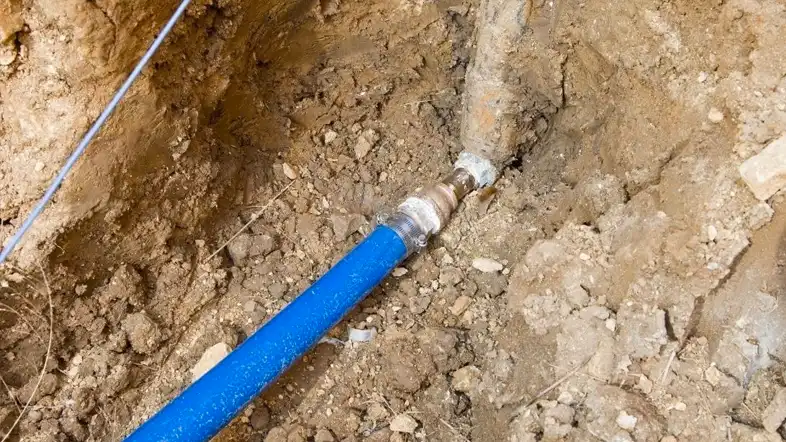
Installation Challenges
Burying a garden hose involves digging a trench, which can be labor-intensive and time-consuming. It requires careful planning to ensure the hose is appropriately placed and sloped for efficient water flow.
Potential for Damage
While burying a hose offers protection, it’s not entirely immune to damage. Shovels, garden tools, or even sharp rocks can puncture the hose during installation or maintenance, leading to leaks and reduced functionality.
Limited Accessibility
Burying the hose can make it less accessible for quick and casual uses. If you frequently move your hose around, burying it might not be the most practical choice, as you’ll need to consider the effort required to access and re-bury it.
Factors to Consider Before Burying Your Garden Hose

Soil Type and Composition
The type of soil in your garden plays a crucial role in buried hose performance. Sandy soils drain water quickly, while clay soils retain water, potentially causing waterlogging. Understanding your soil composition helps determine how well your hose will function underground.
Climate Considerations
Extreme cold temperatures can lead to frozen hoses and potential damage. If you live in an area with harsh winters, you’ll need to take precautions to prevent freezing and ensure the hose remains functional year-round.
Planned Hose Usage
Consider how you’ll use the hose. Will it be primarily for irrigation, or will you also use it for tasks like pressure washing? This will affect the hose’s size, material, and the depth at which you bury it.
How to Bury a Garden Hose: Step-by-Step Guide
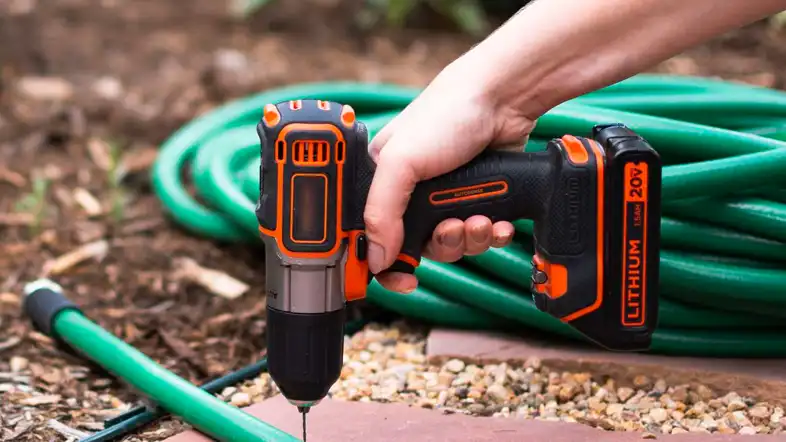
Gathering Materials
Before you start, gather all the necessary materials, including a hose of suitable length, a shovel, sand for padding, and hose guides for directing the hose’s path.
Choosing the Right Depth
Dig a trench to the appropriate depth, considering factors like frost depth, soil type, and the hose’s size. A common guideline is to bury the hose at least 12 inches deep.
Digging the Trench
Carefully dig the trench along the desired path, ensuring it has a gentle slope to facilitate water flow. Remove any sharp objects that could damage the hose.
Placing the Hose
Lay the hose in the trench, avoiding kinks or sharp bends. Insert hose guides to keep it properly positioned.
Backfilling and Finishing
Cover the hose with sand to provide cushioning and prevent direct contact with soil. Backfill the trench and pat down the soil. Water the area to help settle the soil.
Tips for Burying a Garden Hose
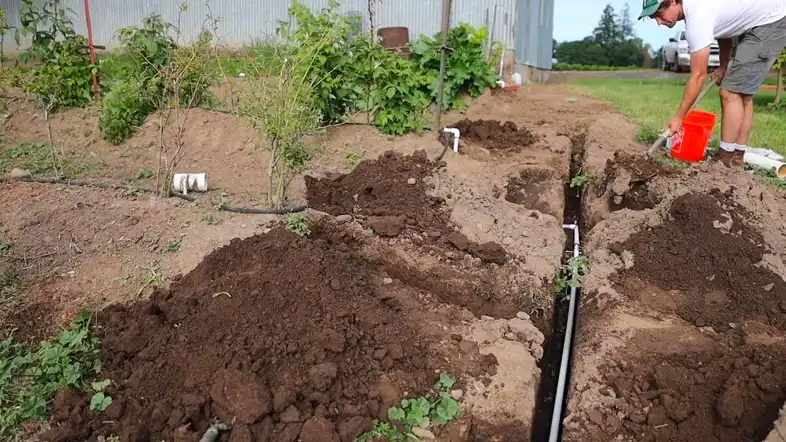
Here are some points that you can keep in mind before your garden hose project get started.
Choose the Right Hose:
Select a hose that is specifically designed for burial. These hoses are usually more robust and can withstand the pressure and potential damage that comes with being buried. They are also designed to resist UV rays and other outdoor elements that could degrade the hose over time.
Select a Suitable Location:
Carefully pick a location for burying the hose. Choose an area that is convenient for your watering needs and where you’ll use the hose most frequently. Make sure the spot is clear of rocks, roots, and debris that could puncture or damage the hose.
Dig a Trench:
Using a shovel, dig a trench in the ground where you intend to bury the hose. The trench should be deep enough to fully cover the hose and wide enough to accommodate the hose comfortably. A deeper trench can help protect the hose from accidental damage.
Slope the Trench:
Create a slight slope along the length of the trench. This allows any water that might be trapped inside the hose to flow out naturally, reducing the risk of freezing and potential damage during colder months. The slope should be gradual, ensuring water drainage without causing water to rush too quickly.
Use a Hose Guide:
Hose guides are tools that help direct the hose into the trench smoothly. They can be stakes or protective channels placed at the entrance and exit points of the trench. These guides make it easier to thread the hose through the trench without kinks or tangles.
Protect the Hose:
Consider placing a protective layer at the bottom of the trench. This could be a rubber mat or a layer of sand that acts as a cushion between the hose and the ground. This protection helps prevent the hose from rubbing against sharp objects or surfaces, reducing the risk of damage.
Lay the Hose:
Gently lay the hose into the trench, following the gradual slope you created. Avoid sharp bends or kinks in the hose, as these can restrict water flow and potentially lead to damage over time. Ensure that the hose is positioned comfortably within the trench without excessive tension.
Backfill the Trench:
As you lay the hose in the trench, cover it with soil, working the soil around the hose carefully. Tamp down the soil as you go to eliminate air pockets. The goal is to ensure that the hose is buried securely and evenly throughout the trench’s length.
Mark the Hose Path:
If the hose is not easily visible after burying, consider marking its path. This can help prevent accidental digging or damage in the future, especially if someone else is working in the area. Markers can be small stakes or flags placed along the path of the buried hose.
Maintenance:
Regularly inspect the buried hose to ensure it’s functioning correctly and hasn’t sustained any damage. If you live in a region with cold winters, it’s essential to drain the hose and disconnect it before the winter season to prevent freezing, which can damage both the hose and any connected equipment.
Consider a Hose Reel:
If the idea of burying the hose seems like a significant task, you might want to explore using a hose reel or holder instead. This keeps the hose neatly coiled and off the ground, reducing tripping hazards and minimizing wear and tear on the hose.
Alternatives to Burying a Garden Hose
Hose Reels
Hose reels offer a convenient above-ground storage solution, keeping the hose organized and easily accessible.
Hose Pots
Hose pots are decorative containers that camouflage the hose while keeping it within reach. They add an aesthetic element to your garden.
Decorative Pathways
Incorporate the hose into your garden’s design by using it to create decorative pathways. This adds functionality and visual appeal.
Maintaining a Buried Garden Hose
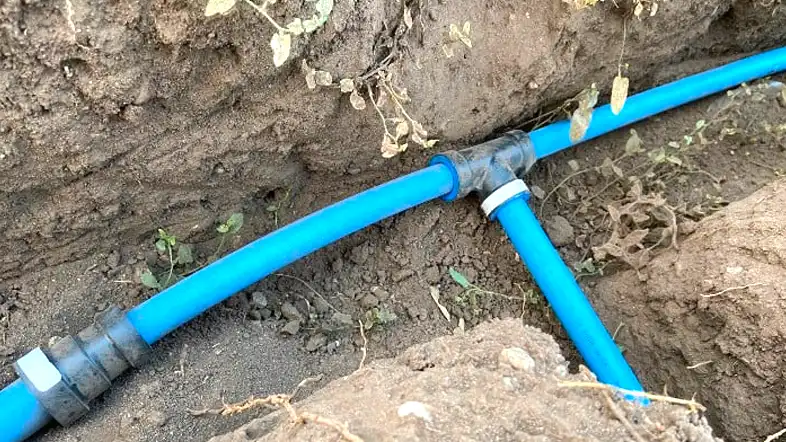
Regular Inspections
Periodically inspect the buried hose for leaks, damage, or clogs. Address any issues promptly to prevent further damage.
Preventing Clogs
Use hose filters and regularly flush the hose to prevent clogs caused by debris or mineral buildup.
Winter Preparations
Before winter, ensure the hose is drained and disconnected to prevent freezing. Consider using insulation to provide additional protection.
Conclusion
Burying a garden hose can be a practical and aesthetically pleasing solution for maintaining a tidy outdoor space. However, it’s essential to consider the installation challenges, potential drawbacks, and your specific gardening needs before making a decision. By weighing the pros and cons, you can determine if burying your garden hose aligns with your goals and lifestyle.
FAQs About Burying Garden Hoses
Is burying a garden hose suitable for all types of soil?
Different soil types can affect the performance of a buried hose. Sandy soils drain better, while clay soils can retain water, potentially leading to issues.
Can I bury a hose on my own, or should I hire a professional?
Burying a hose can be a DIY project, but it requires careful planning and execution. If you’re unsure, consulting a professional can ensure the job is done correctly.
What’s the recommended depth for burying a garden hose?
A general guideline is to bury the hose at least 12 inches deep. However, factors like climate and soil type can influence this depth.
Can I still move my hose around if it’s buried?
While possible, it can be challenging to move a buried hose frequently. If you need frequent access, consider alternative storage options.
How do I prevent the buried hose from freezing in winter?
To prevent freezing, disconnect and drain the hose before winter. Adding insulation around the buried section can provide extra protection.
Can i bury a garden hose underground
Yes, you can bury a garden hose underground. Choose a hose designed for burial, dig a trench, create a gentle slope for drainage, use guides, protect with a layer, lay the hose carefully, backfill the trench, and consider maintenance for functionality.

